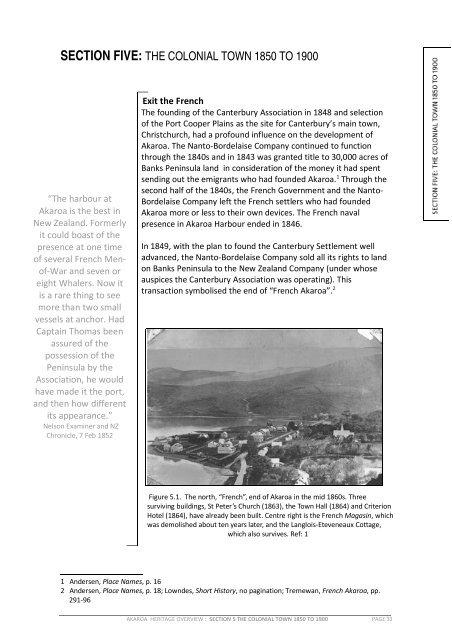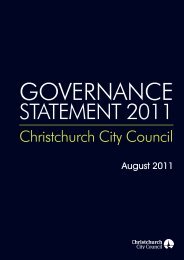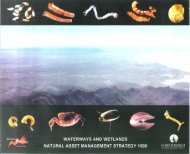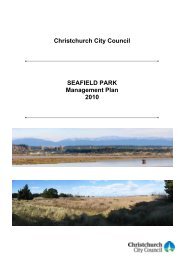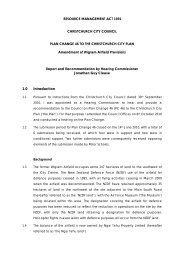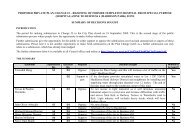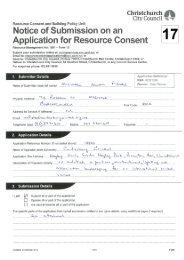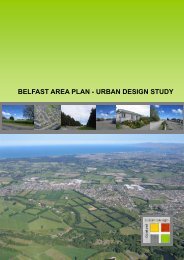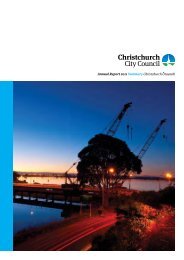Akaroa Historical Overview - Christchurch City Council
Akaroa Historical Overview - Christchurch City Council
Akaroa Historical Overview - Christchurch City Council
You also want an ePaper? Increase the reach of your titles
YUMPU automatically turns print PDFs into web optimized ePapers that Google loves.
SECTION FIVE: THE COLONIAL TOWN 1850 TO 1900<br />
“The harbour at<br />
<strong>Akaroa</strong> is the best in<br />
New Zealand. Formerly<br />
it could boast of the<br />
presence at one time<br />
of several French Menof-War<br />
and seven or<br />
eight Whalers. Now it<br />
is a rare thing to see<br />
more than two small<br />
vessels at anchor. Had<br />
Captain Thomas been<br />
assured of the<br />
possession of the<br />
Peninsula by the<br />
Association, he would<br />
have made it the port,<br />
and then how different<br />
its appearance.”<br />
Nelson Examiner and NZ<br />
Chronicle, 7 Feb 1852<br />
Exit the French<br />
The founding of the Canterbury Association in 1848 and selection<br />
of the Port Cooper Plains as the site for Canterbury’s main town,<br />
<strong>Christchurch</strong>, had a profound influence on the development of<br />
<strong>Akaroa</strong>. The Nanto-Bordelaise Company continued to function<br />
through the 1840s and in 1843 was granted title to 30,000 acres of<br />
Banks Peninsula land in consideration of the money it had spent<br />
sending out the emigrants who had founded <strong>Akaroa</strong>. 1 Through the<br />
second half of the 1840s, the French Government and the Nanto-<br />
Bordelaise Company left the French settlers who had founded<br />
<strong>Akaroa</strong> more or less to their own devices. The French naval<br />
presence in <strong>Akaroa</strong> Harbour ended in 1846.<br />
In 1849, with the plan to found the Canterbury Settlement well<br />
advanced, the Nanto-Bordelaise Company sold all its rights to land<br />
on Banks Peninsula to the New Zealand Company (under whose<br />
auspices the Canterbury Association was operating). This<br />
transaction symbolised the end of “French <strong>Akaroa</strong>”. 2<br />
Figure 5.1. The north, “French”, end of <strong>Akaroa</strong> in the mid 1860s. Three<br />
surviving buildings, St Peter’s Church (1863), the Town Hall (1864) and Criterion<br />
Hotel (1864), have already been built. Centre right is the French Magasin, which<br />
was demolished about ten years later, and the Langlois-Eteveneaux Cottage,<br />
which also survives. Ref: 1<br />
1 Andersen, Place Names, p. 16<br />
2 Andersen, Place Names, p. 18; Lowndes, Short History, no pagination; Tremewan, French <strong>Akaroa</strong>, pp.<br />
291-96<br />
AKAROA HERITAGE OVERVIEW : SECTION 5 THE COLONIAL TOWN 1850 TO 1900 PAGE 33


